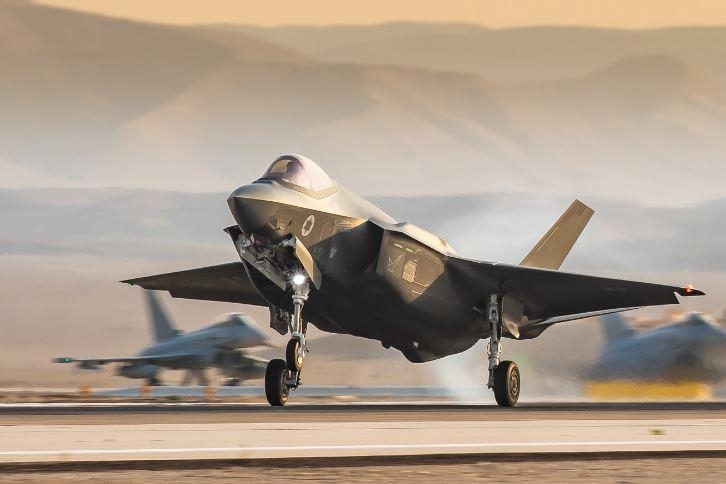by LITAL KHAIKIN

In January 2020, Israel acquired its second squadron of F-35 joint strike fighters from Maryland based aerospace giant Lockheed Martin. This latest purchase brings the total number of planes bought by Israel from Lockheed Martin to fifty (while authorized by the US to purchase up to 75), the latest of which are expected to be delivered through 2024.
The F-35 has faced years of delays, costing U.S. taxpayers over $1 trillion in sustainment costs. Already in 2011—a year after Yehud Barak approved Israel’s purchase of the planes—a Stratfor analyst described the F-35s in a leaked email as “literally the most expensive military venture since the great wall of China.”
In several of its most recent reports, the U.S. Government Accountability Office (GAO) stated that Lockheed Martin has still not resolved major issues with the plane. Some of the critical issues include a scarcity of spare parts, malfunctioning helmets and oxygen monitors, and flaws in the plane’s stealth capabilities.
In 2018, the GAO recommended that Congress withhold funding from F-35 development until “critical aircraft deficiencies” were resolved. Still, in November 2019, the GAO stated, “F-35 performance has not met warfighter requirements.”
Lockheed Martin does not typically allow purchasing countries to modify its planes, but a notable exception was made for Israel. Israeli modifications to the F-35—the modified version of which is called F-35 “Adir”—include a specialized helmet display developed by Israeli military contractor Elbit Systems in partnership with Rockwell Collins, a data link modification that would share sensor information with friendly forces, and radar-jamming pods developed by Elbit and Israeli Aerospace Industries.
The F-35’s stealth capability is reduced when the plane carries missiles on its wings, such as the Python-5 and the SPICE glidebombs developed by Israeli company Rafael Defense Systems. So, Israel Aerospace Industries has been developing wings that would allow the planes to carry missiles and still remain relatively undetectable by radar—though this capability may be made obsolete with the introduction of quantum radar.
The IDF is also preparing the upgraded F-35 for cyber-conflict—recalling Edward Snowden’s revelations in 2015 on Chinese hacking of the fighter planes. Cybersecurity for the F-35 Adirs was developed under the F-35’s Chief Engineer and Lead Developer, Idan Nadav.
An agreement signed under Obama in 2016 guarantees Israel a ten-year aid package of $3.8 billion per year as part of the U.S. Foreign Military Financing Budget (FMF). Israeli military development makes up over 50 percent of Washington’s FMF budget globally.
“This move is symptomatic of the cozy political and military relationship between Israel and the US. It is a relationship that all too often has provided political cover for the Israeli government’s aggressive foreign policy and the continued oppression of Palestinians,” wrote Andrew Smith of the Campaign Against Arms Trade in an email to Toward Freedom. “It suggests that the military strategies will remain closely integrated going forward—this doesn’t just spell danger for Palestinians, it also increases the likelihood of further instability and regional hostilities with Iran.”
Lobbying for increases in U.S. military aid to Israel, including the F-35 budget, has long been driven by the American Israel Public Affairs Committee (AIPAC). In March 2019, AIPAC’s CEO Howard Kohr testified to the U.S. House of Representatives, describing Israel as “an anchor of stability” in the Middle East, referring to “Iran’s unceasing aggression.”
Increasing U.S. funding for the Israeli military, according to Kohr, “saves U.S. taxpayer money by helping prevent more costly wars, crises and disasters.” Lockheed Martin in turn stated that the company was “proud to support Israel and the IAF with the F-35, the world’s most advanced aircraft that provides unmatched capabilities to enable allies to secure peace around the world.”
Toward Freedom for more